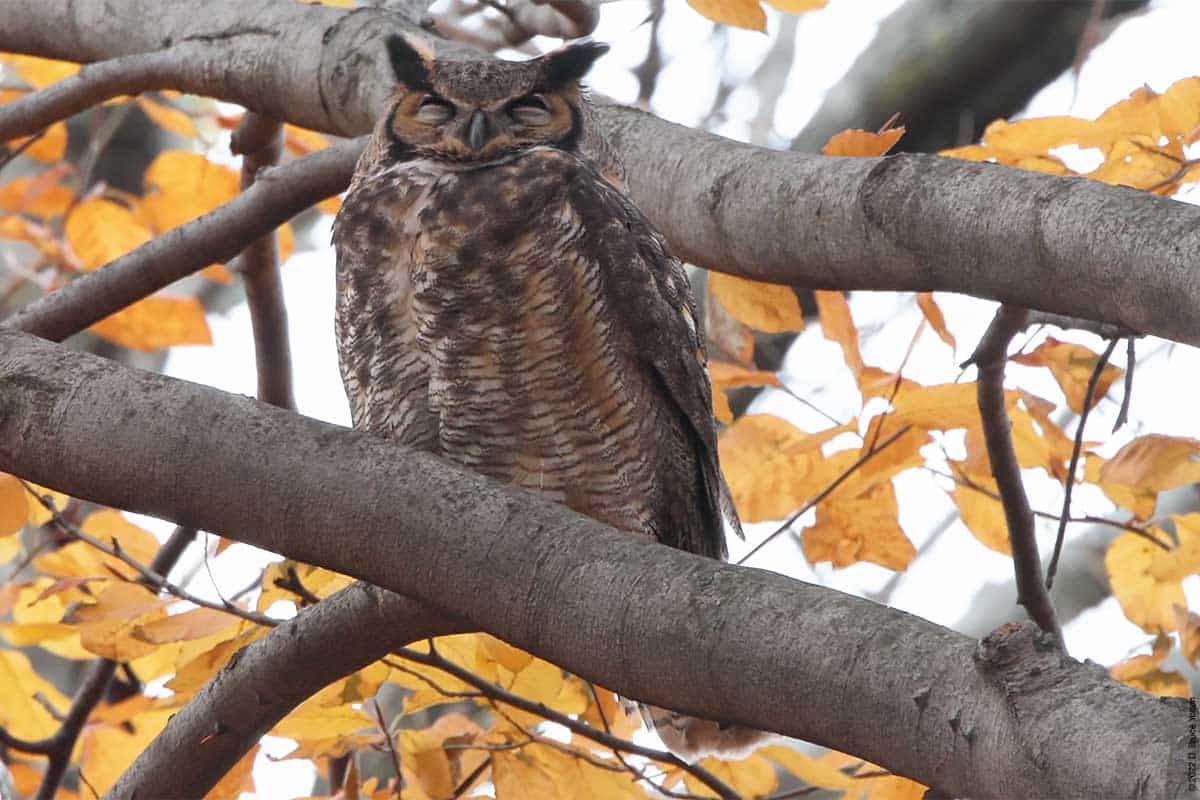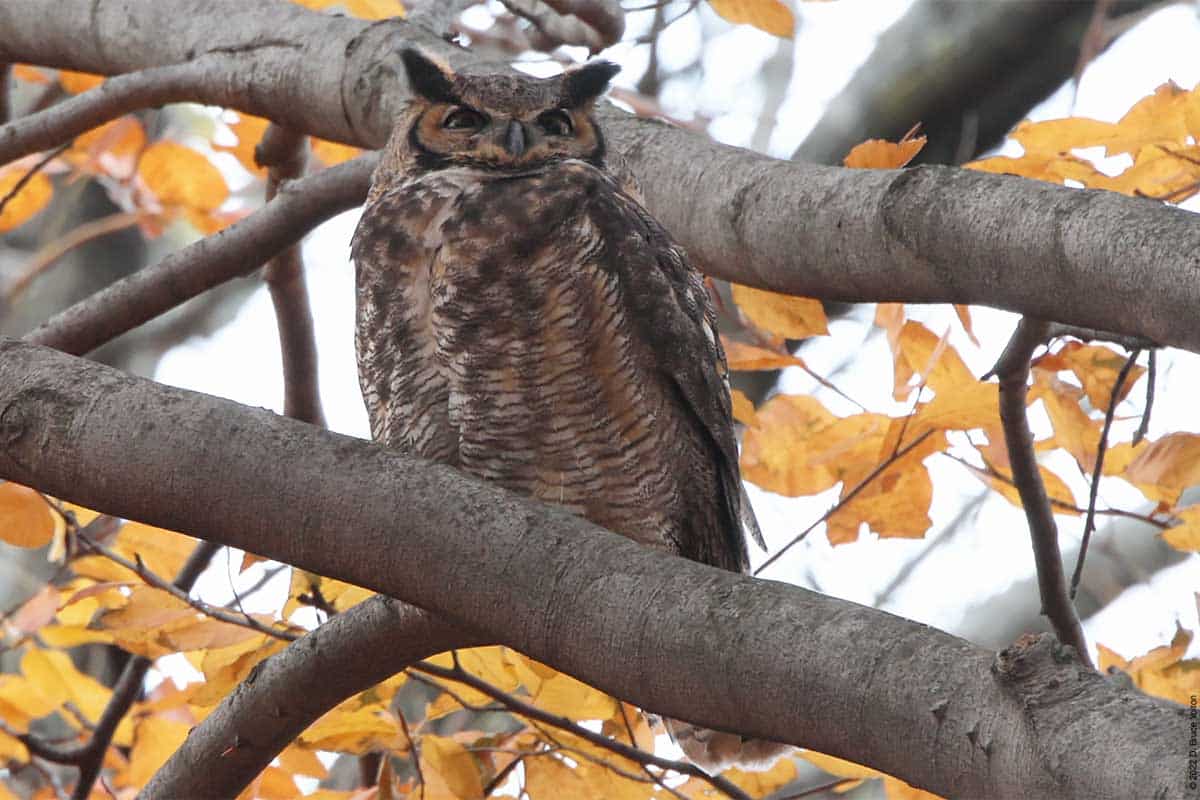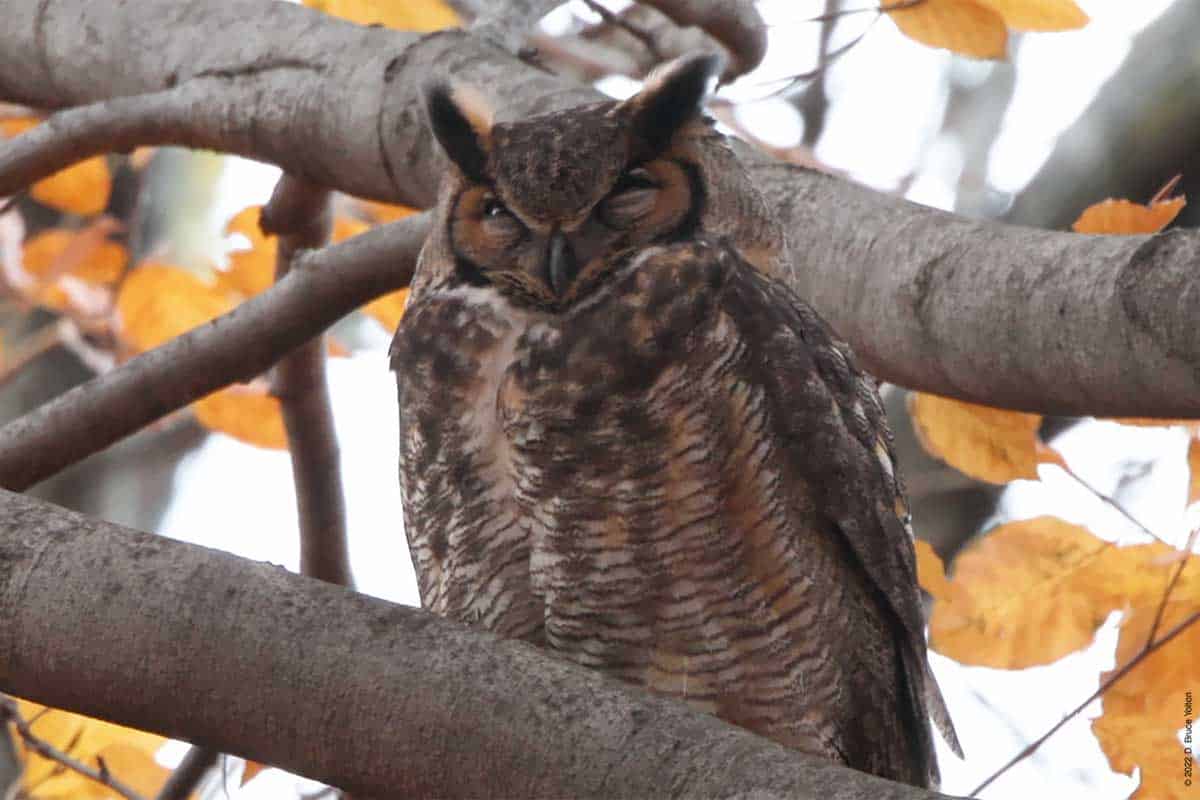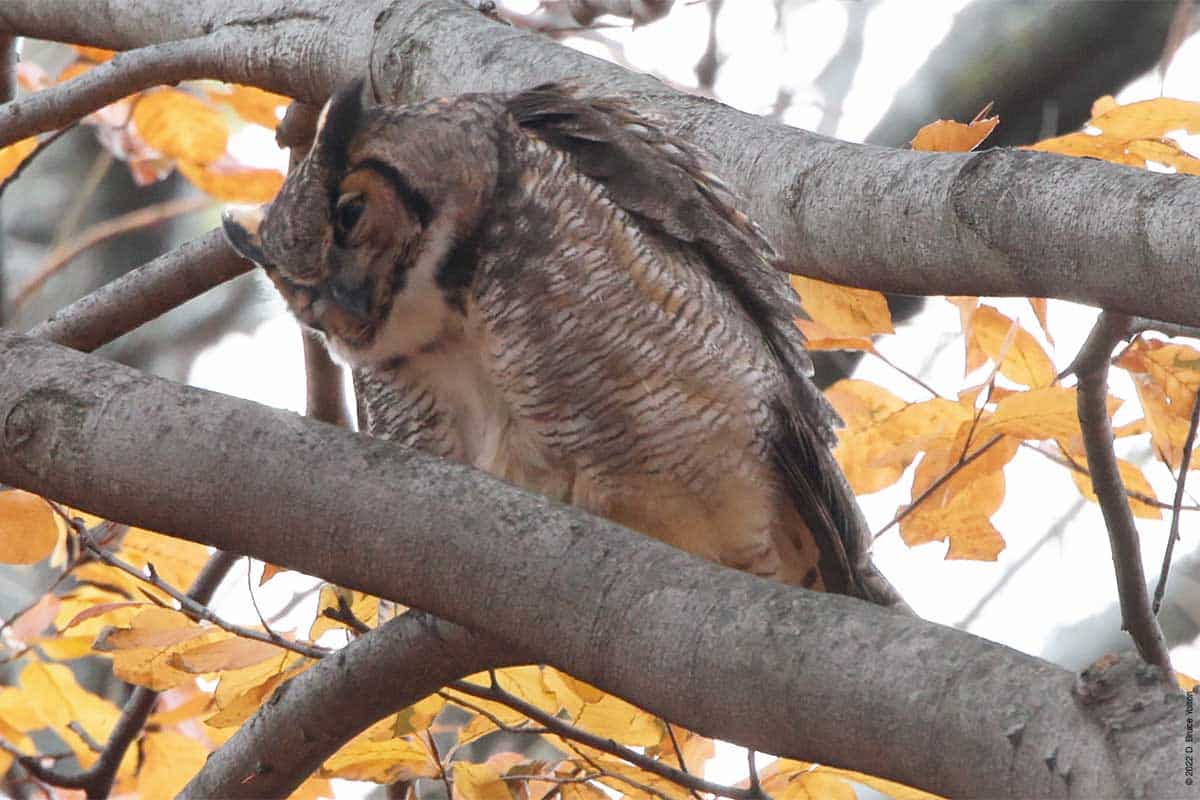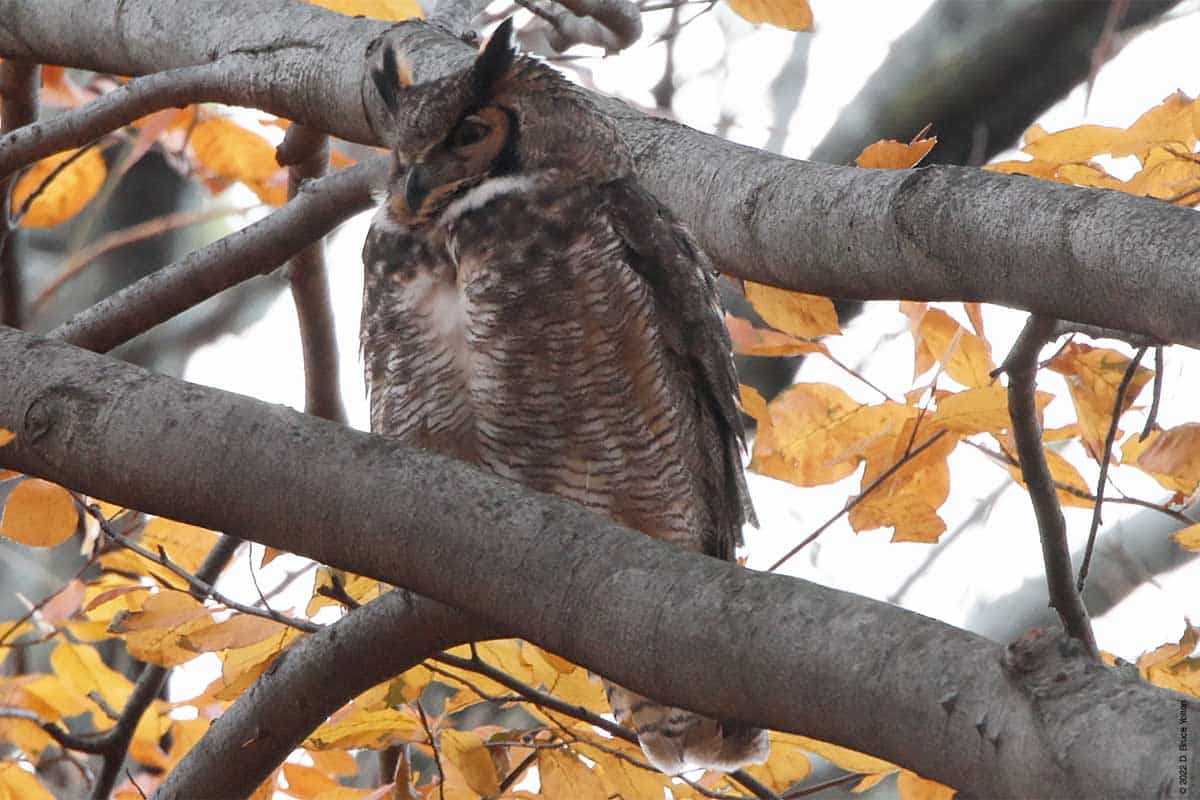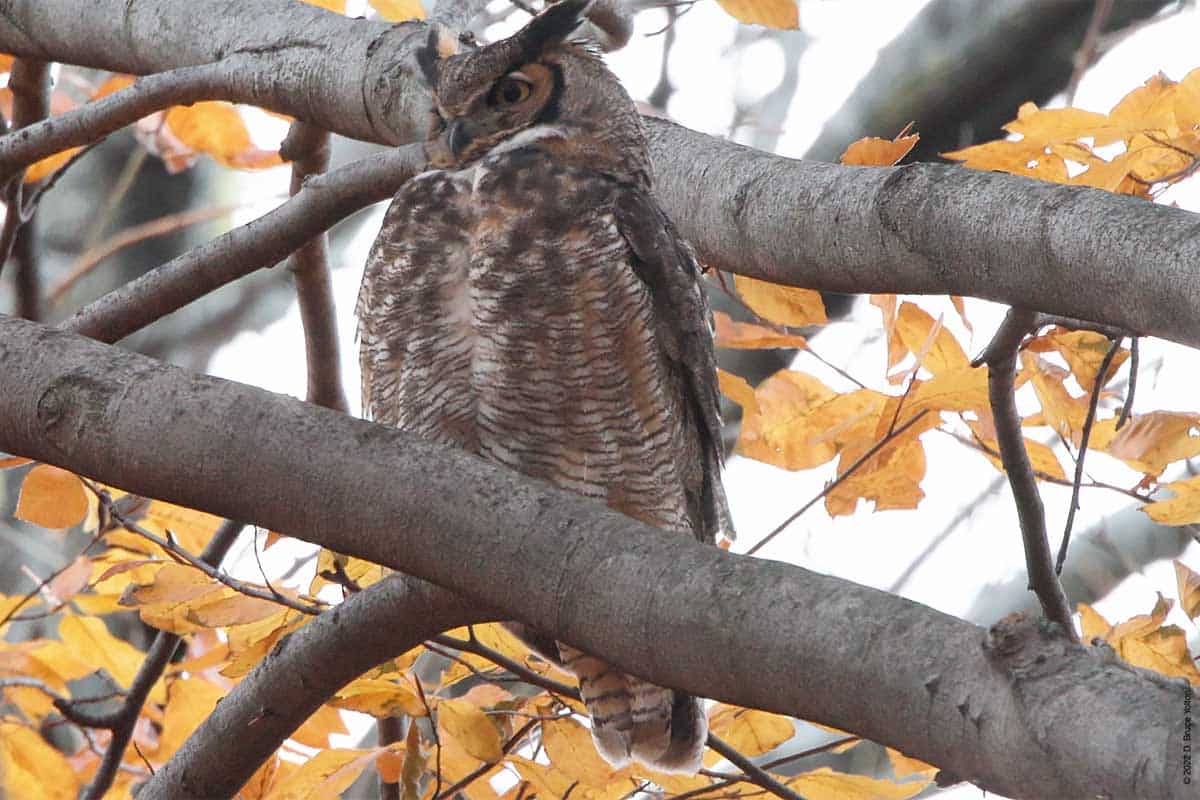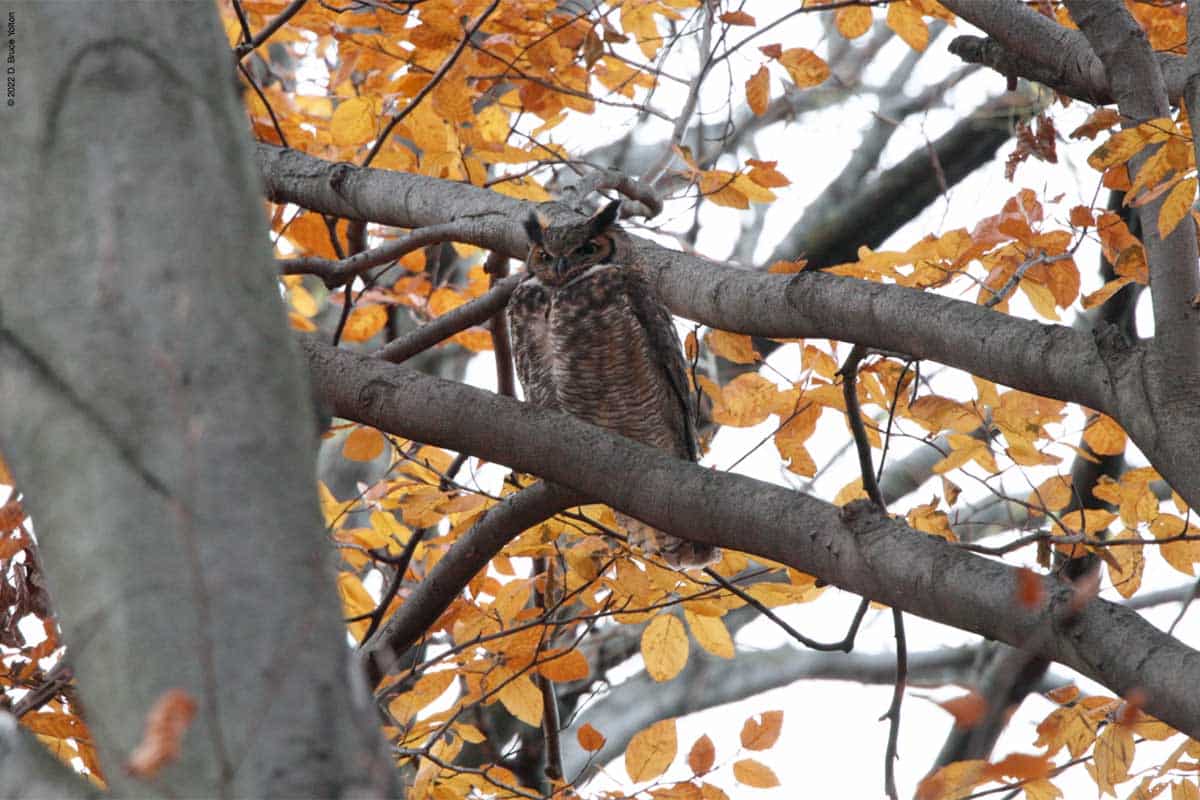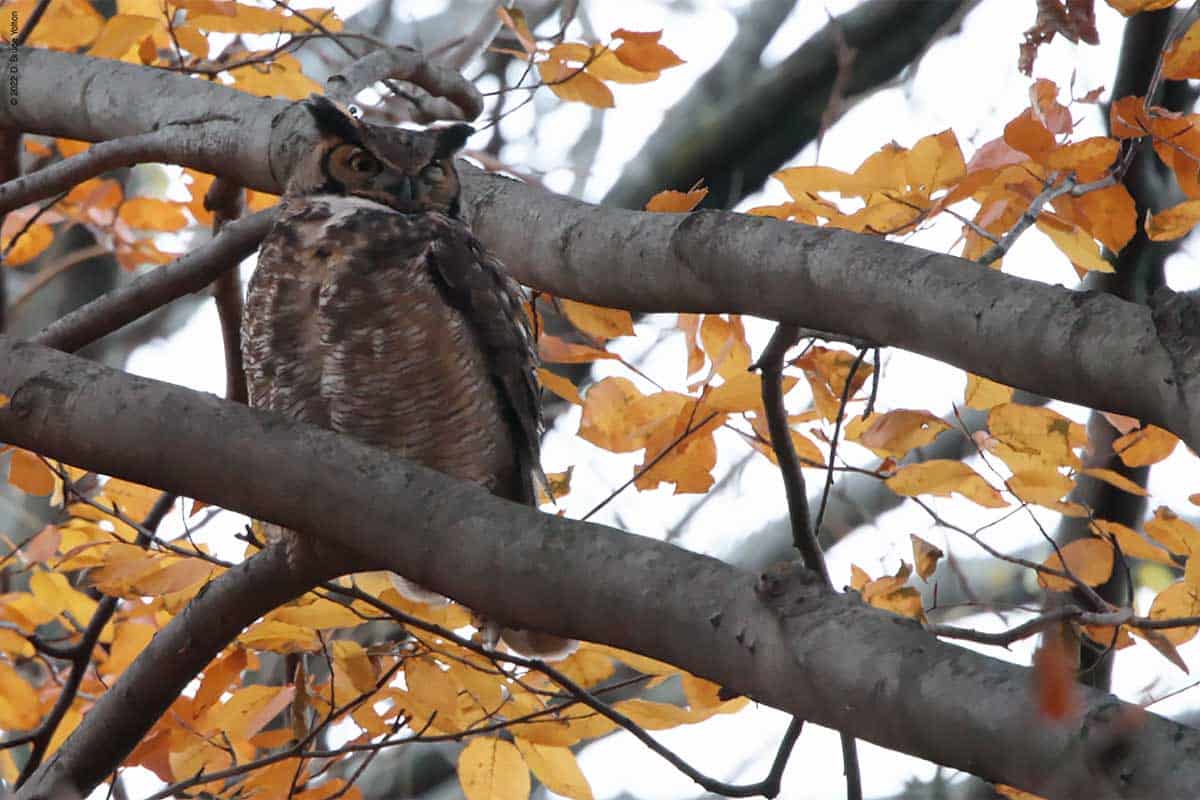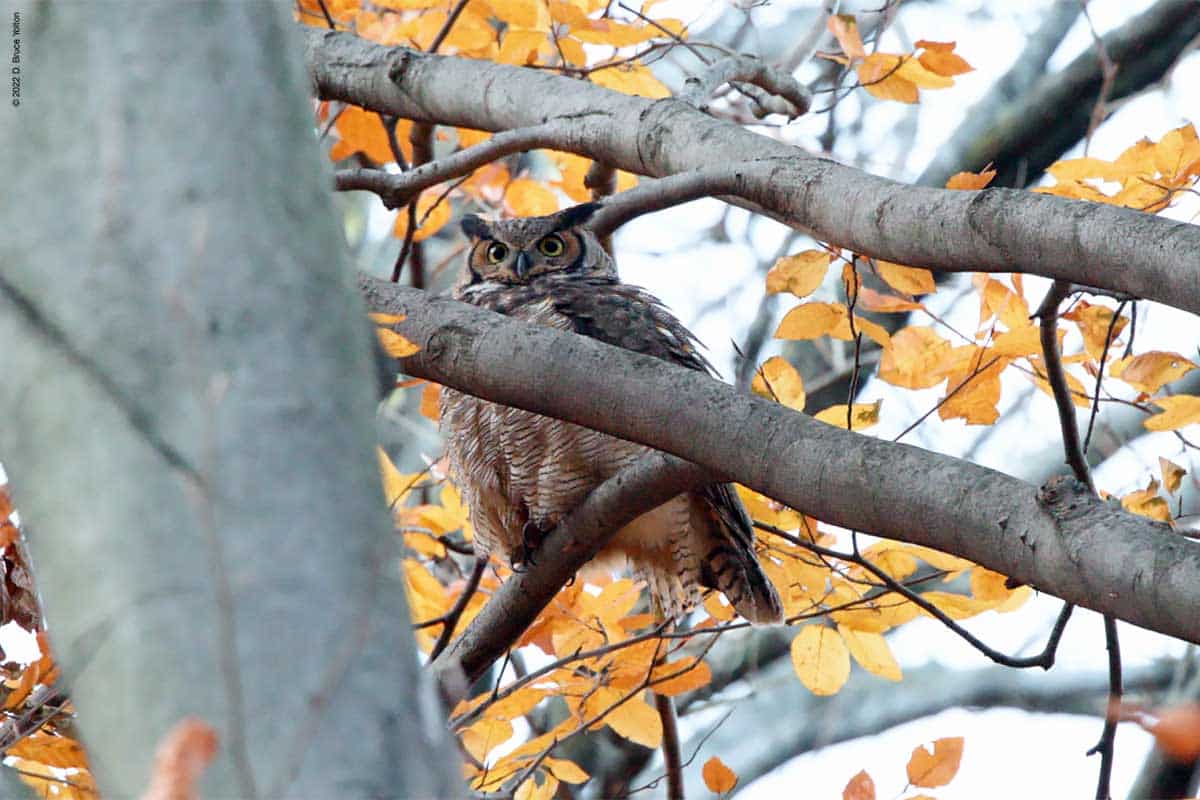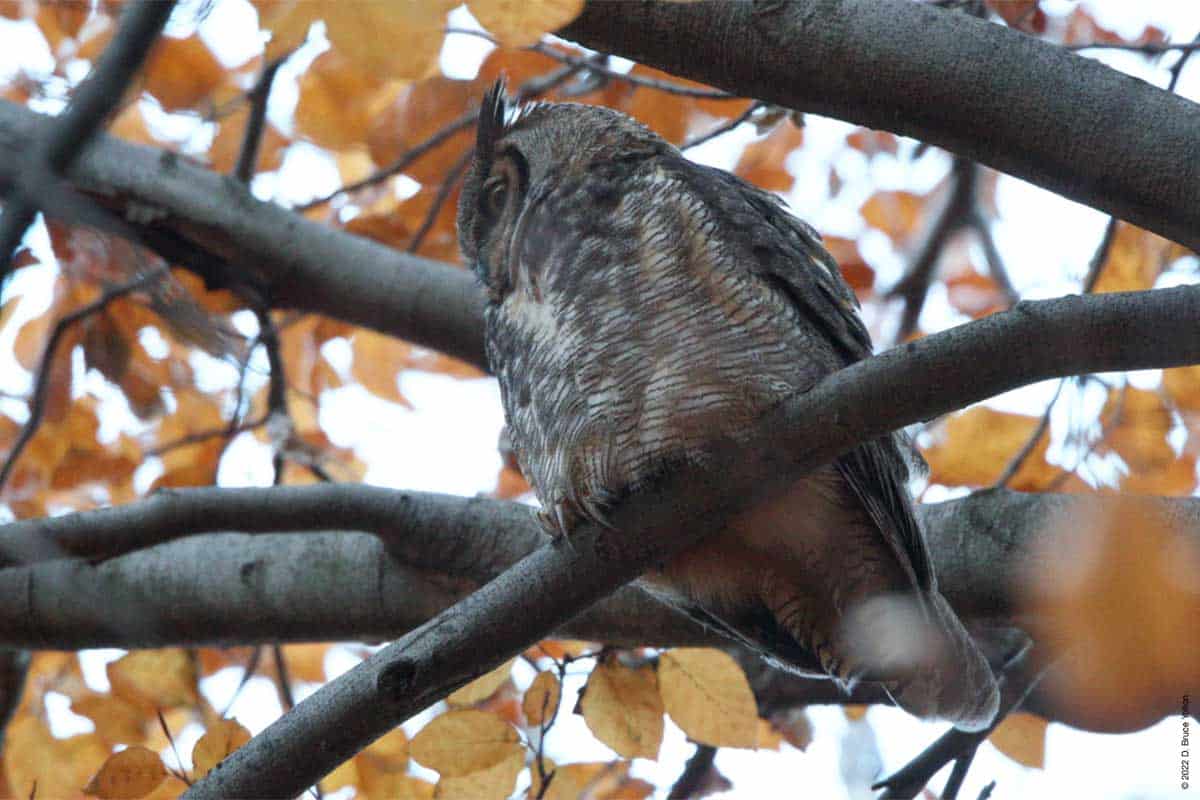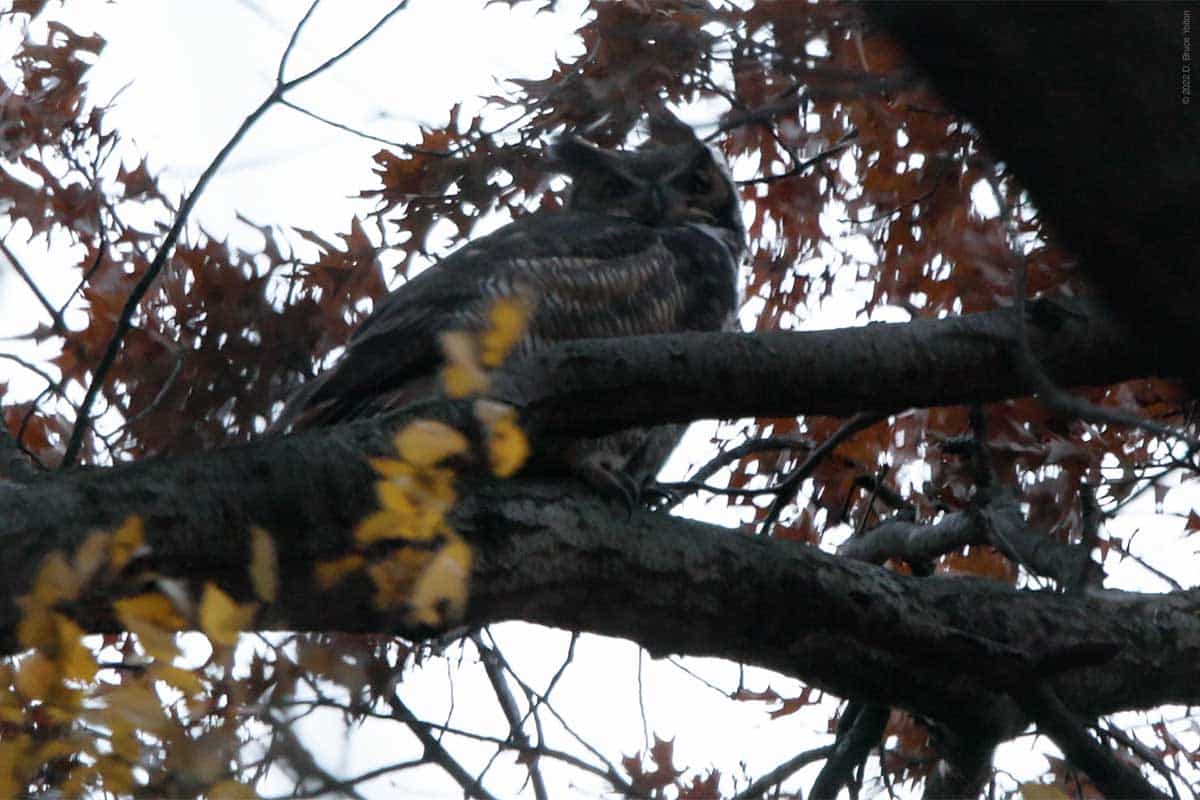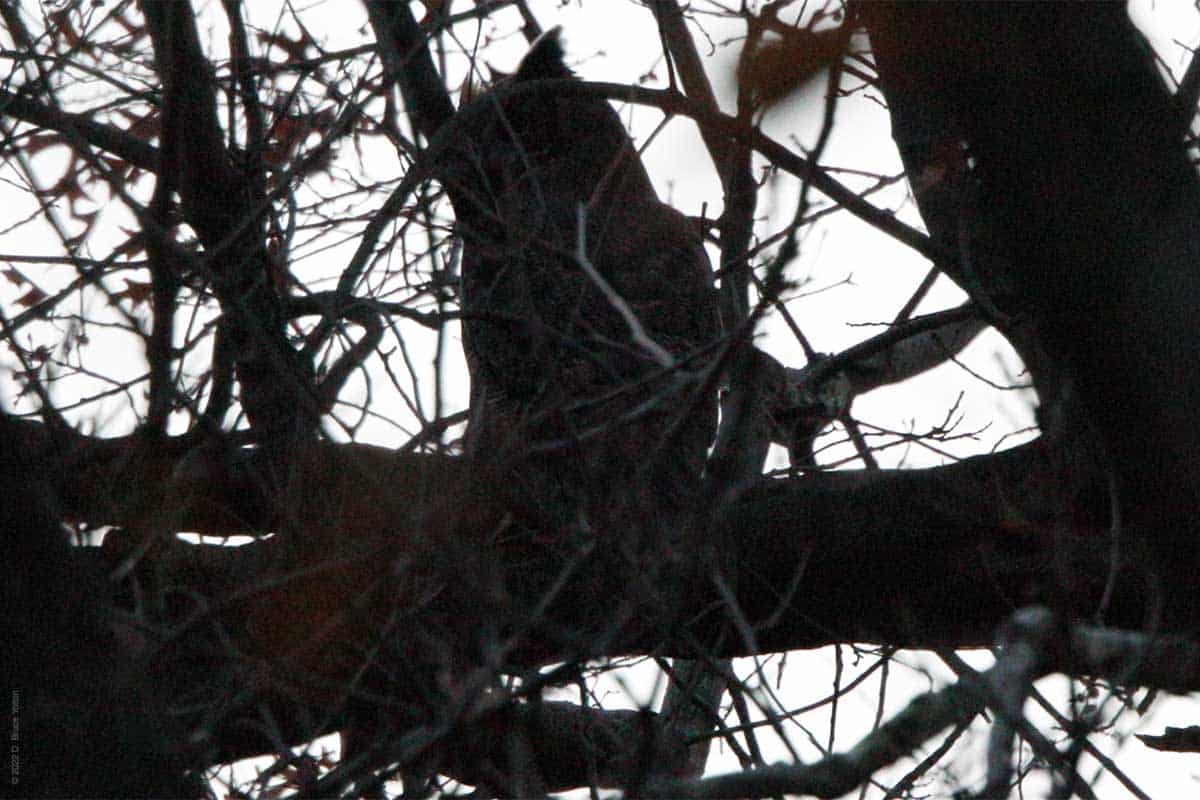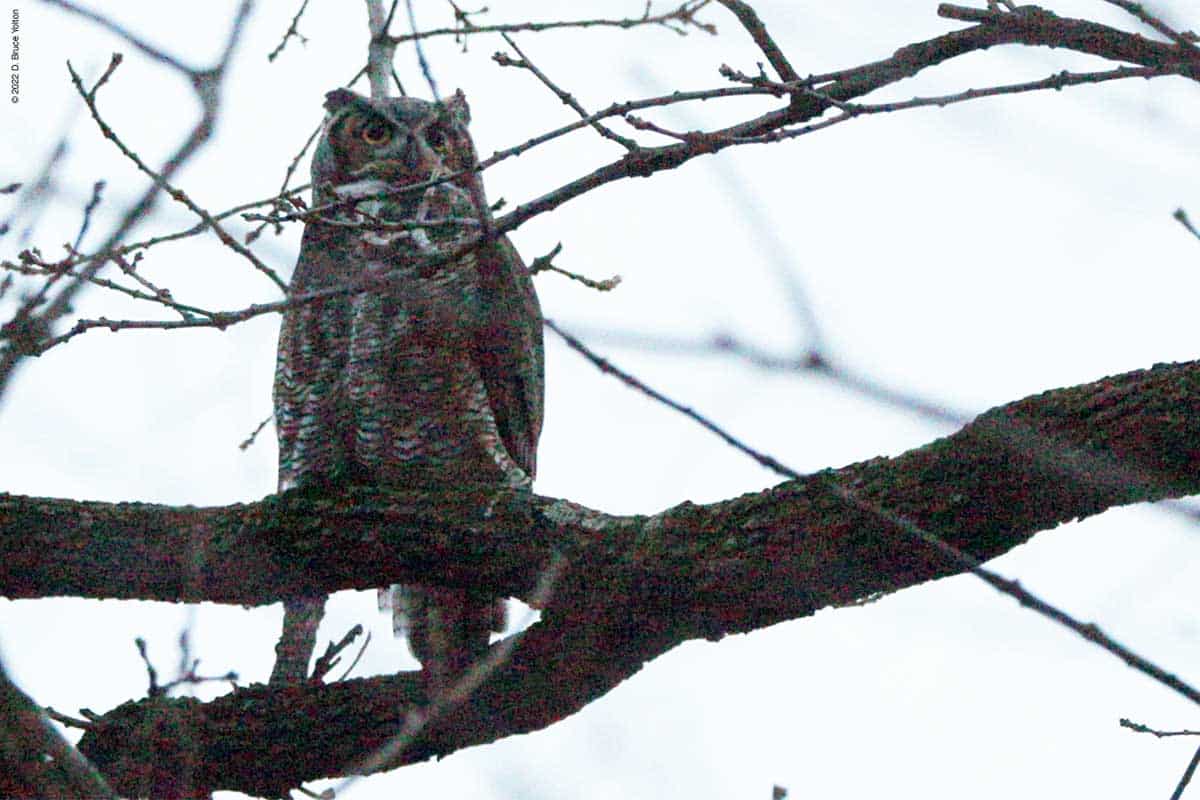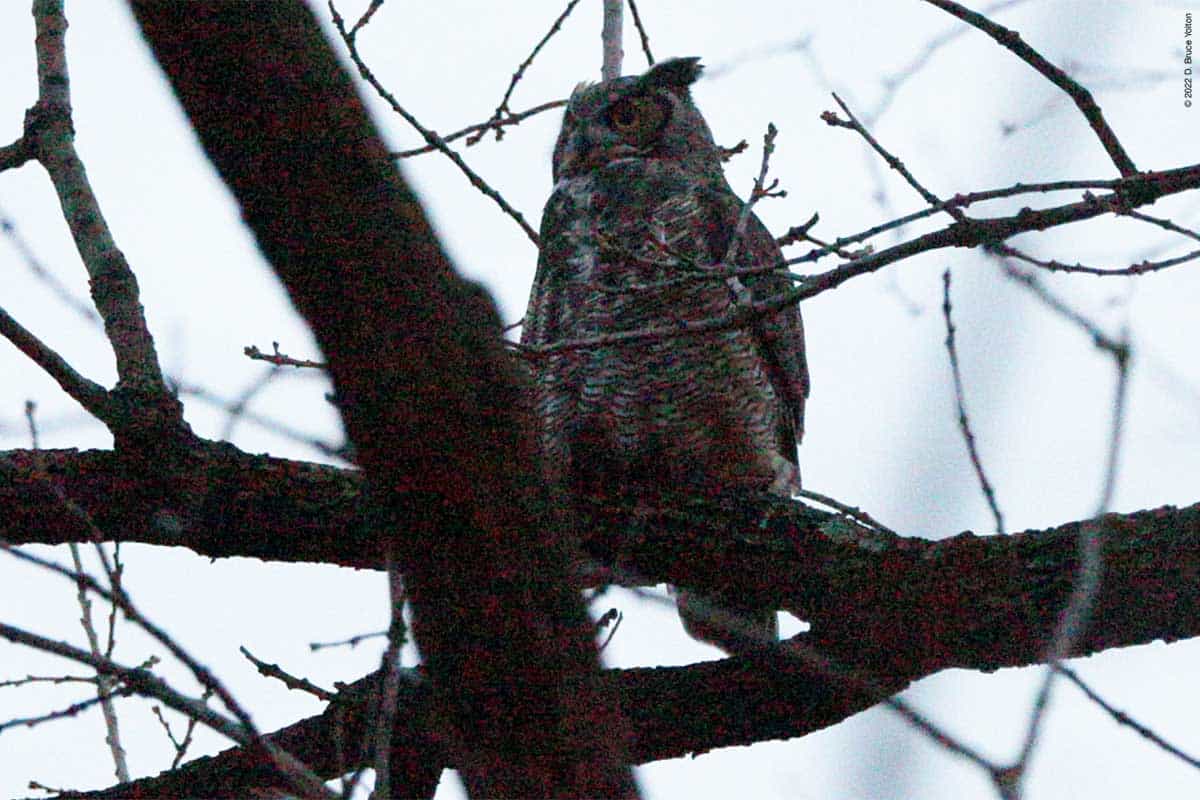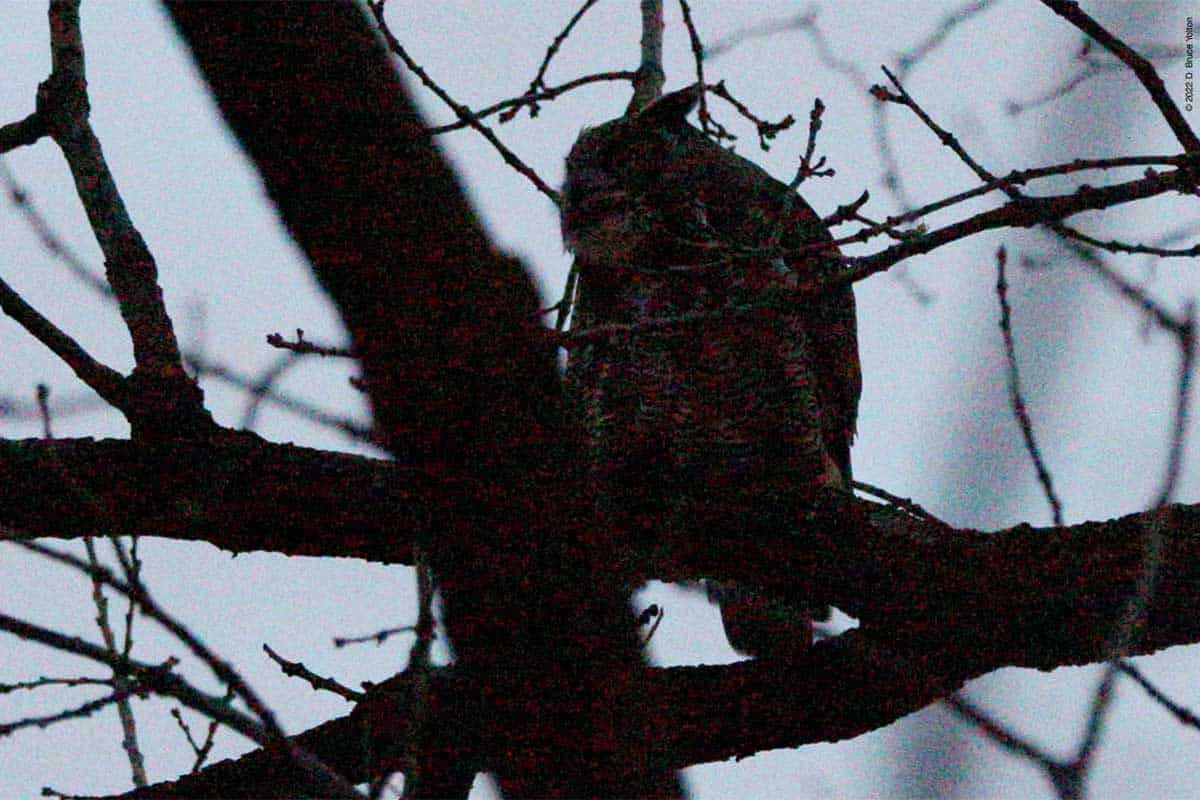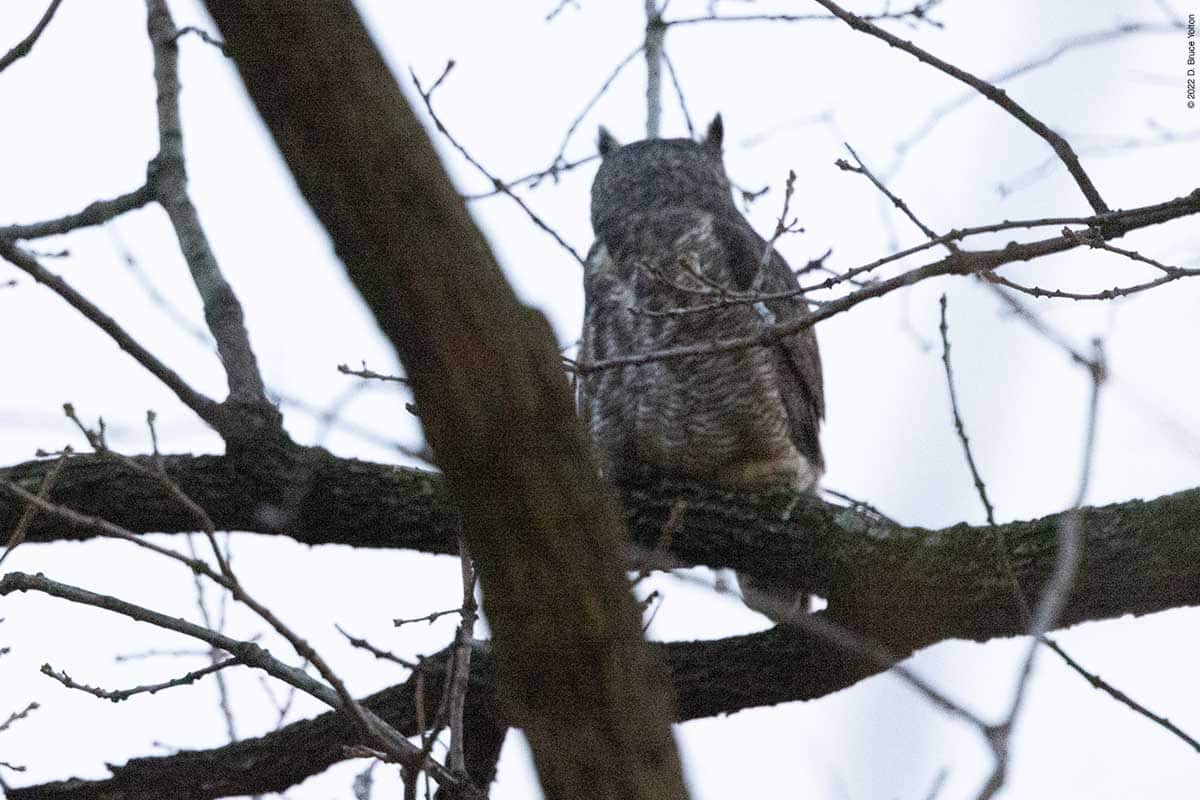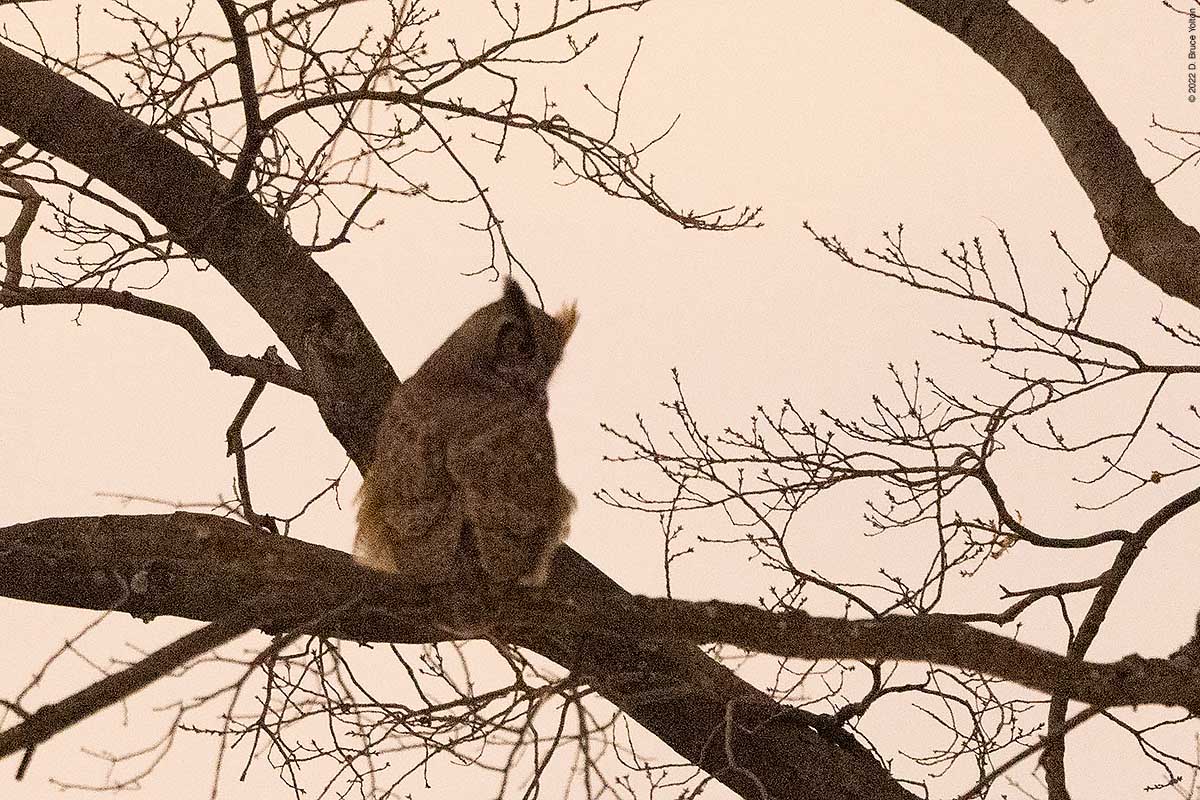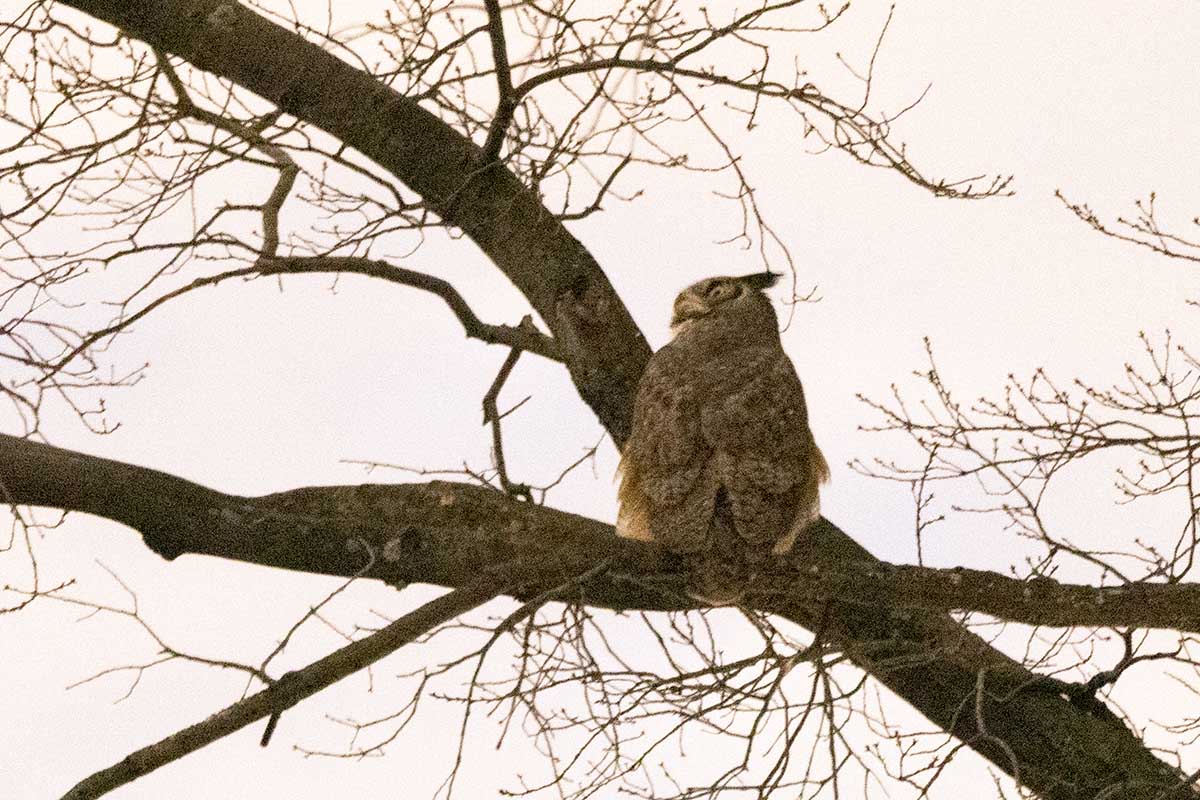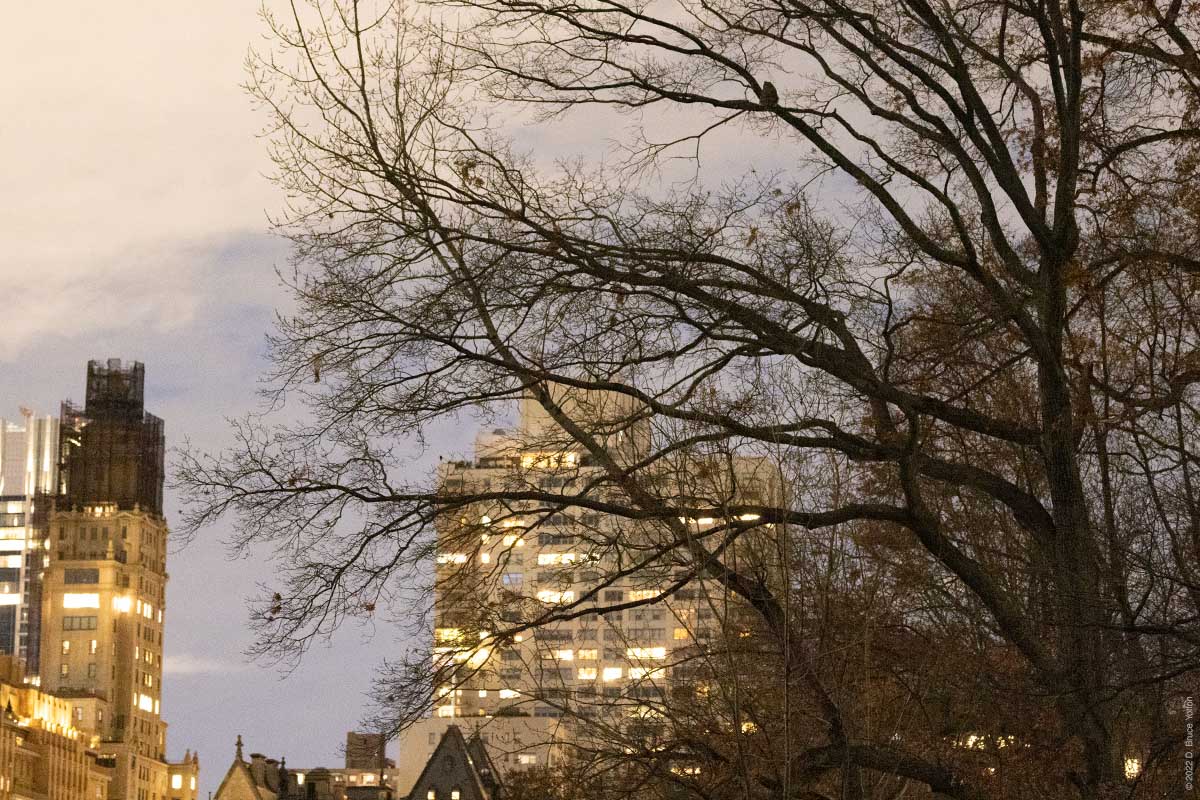Central Park continues to have two Great Horned Owls, who while roosting within a 100 yards of each other, haven’t been seen interacting.
I’ve been fascinated studying not only the owl, but the behavior and reactions of those who are watching it.
These two owls are incredibly easy to watch and study. We’re blessed to have them in a park full of paths and artificial light. It allows us to watch them starting in the late afternoon through the early evening.
During that time period you get to see so much more than just a sleeping owl. As it gets darker, Tufted Titmouse’s and Blue Jays come through to scold the owl. A rude alarm bell that dusk has arrived! The owl will preen, cough up a pellet (the bones and fur that wasn’t digested), do stretches (owl yoga), and then poop. Its a consistent ritual, and is similar for all larger owls, even the Snowy Owl that was in the park for a month in early 2021.
The first Great Horned Owl flight usually isn’t too far away from the roost tree. Now that it’s dark, the owl usually chooses an open branches with a good vistas. In this open space, there might be more preening, but now we’re seeing an owl that is fully awake. With large eyes that are in a fixed position, the owl reacts to sounds and focuses on many of them by quickly turning its head.
If the owl has been harassed during the day by a raptor, the owl may do a bit a harassment in return. But usually it’s about finding a perch to relax for awhile before going off exploring and hunting. Water also seems to be an attraction. For the Great Horned Owls, unlike Screech Owls and Barred Owls who like a post fly out bath in a shallow stream, bathing doesn’t seem to be the attraction. The fascination seems more about watching waterfowl!
(The current Great Horned Owls don’t seem to be hunting ducks but a visiting owl about ten years ago, often took Mallards along the shore of Lake. The ducks would come to the shore to eat acorns after dark, and this owl would patiently wait and take one. The result was a mess that a park employee would have to clean up frequently early in the morning until the owl left the part.)
If you’re lucky, you might also be rewarded with some vocalizations, either before or after fly out too. This one has a grunt mixed in with the hoots.
The humans seeing the owl have been interesting to watch too!
So many are coming not to get a better understanding of an owl but to be part of the Next Big Thing. It’s fascinating to see people take the time to come find these owls either alone or with friends, take a few pictures and just leave. So many people bird watch as if they are collecting baseball cards. See owl, take selfie, check box, and then off to next bird! I aways think to myself, wow you’re missing out on so much.
Or photographers who only want to see the owl in perfect light, in a low branch without any branches around it. While I understand the desire to get a perfect shot, the failure to also look at and document the owls coloring, textures, behavior and habitat seems like a missed opportunity. Especially, with these Great Horned Owls, there are so many great details to see only if you take the time to watch them. They have a wonderful white collar that you only see when they stretch their necks, great bobbing action when they see prey or a threat, and interesing feather detail when they do their stretches before fly out.
I’m much happier taking and publishing grainy photographs that document the species, than publishing one perfect shot on Twitter or a clip on Instagram. Maybe I’m too much of a naturalist to be an influencer!
